3 Best Radar Detectors for 2024, Tested
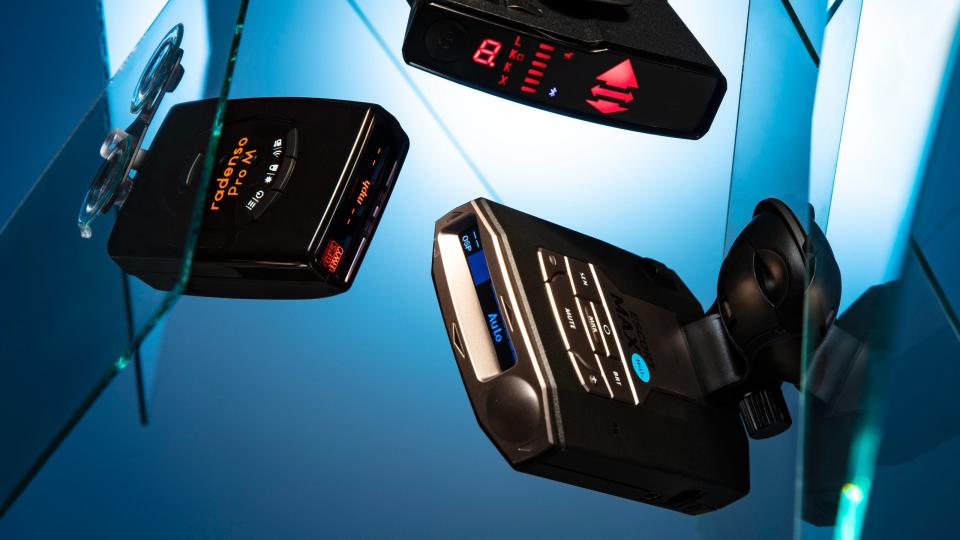
"Hearst Magazines and Yahoo may earn commission or revenue on some items through these links."
From the May 2021 issue of Car and Driver [Ed. note—This story was updated in October 2023.]
"Do you know how fast you were going?" is the mother of all trick questions—and there's no good answer. Upstart navigation apps such as Waze are brilliant at sounding the alarm to sneaky speed traps, but radar detectors are still the kings of sniffing out Smokey. We feel it's worth the effort to spend the money upfront to avoid that question in the first place. Knowing this, what's the best radar detector on the market?
We couldn't test them all, but we managed to gather three heavy hitters for this test. Valentine's V1 Gen2 is the first major redesign since the V1 debuted in 1992, and at $599, it's cheaper than the original when accounting for inflation. For a steeper $650, the Escort Max 360c is loaded with features, including directional arrows and a GPS antenna. Radenso, a relative newcomer, has garnered a strong following with its top model, the $450 Pro M.
We kept our tests simple, measuring front and rear detection distance and how well each sensed radar around a corner. While police radar guns shoot X-, K-, and Ka-band frequencies, we stuck to Ka band, as it's the most difficult to detect at a distance.
To see how well each weeds out false alerts, we then switched the detectors from their most sensitive mode to their most selective and rolled through Ann Arbor's strip-mall gauntlet. Without filtering, this drive is essentially a continuous, nine-mile-long alert due to the motion detectors everywhere. Two of the three models offer GPS lockout for this kind of thing; it works by logging location and frequency. You have to push a button for the Pro M to remember irksome spots. But for the Escort, drive past a no-good automatic door three times, and in theory you'll never hear that false alert again.
It's easy to get mired in test results when all you want to know is, "If I stick this on my windshield, will I get a ticket?" Any of these detectors will greatly reduce your odds of a chat with the roadside tax collector. Which one you want depends on how you expect a radar detector to behave.
Shop the best radar detector deals on Amazon
Escort Max 360c
Highs: GPS lockout, slick magnetic mount, easy to mute with power-cord button.
Lows: Expensive, arrow function is less useful than Valentine's.
Verdict: A balanced compromise of range and filtering comes at a price.
The Escort exists in the space between the Valentine's high sensitivity and the Radenso's adept filtering. With six false alerts on our suburban route, the Max 360c wasn't much quieter than the V1 Gen2. Fortunately, it has GPS lockout and can learn to ignore fixed-location triggers.
The Max 360c gave ample warning in all three of our scenarios. Escort began parroting the V1's hallmark arrows back in 2015, but they're not as useful here. If the V1's arrows point out the threat in real time, the Max 360c's seem like they're on a five-second delay. That lag makes it difficult to know exactly where—and what—the radar is coming from.
We like that you can slide the Max 360c on and off the EZ Mag mount with one hand, and the power-cord mute button can be handy, depending on where your car's 12-volt outlet is located. You'll pay a premium for the feature-packed Max 360c. Just know that not all of those bells and whistles work as well as the competition's.
For the latest version of Escort's Max 360C, check out our review of the MKII model here.
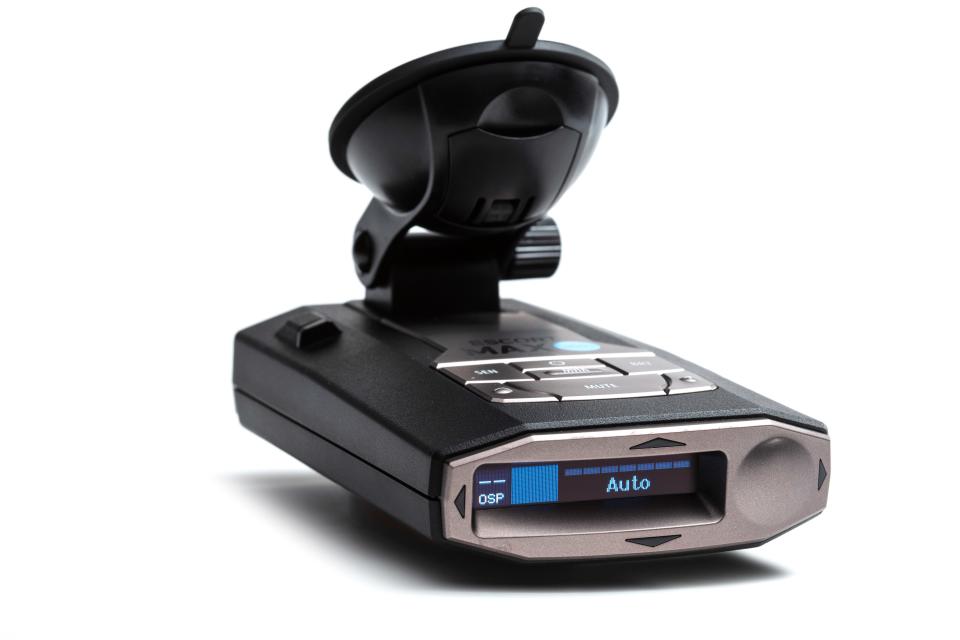
Escort Max 360c
amazon.com
$640.49
John Roe - Car and DriverRadenso Pro M
Highs: Excellent out-of-the-box filtering, GPS lockout, great price.
Lows: Little rearward protection, questionable mount durability, confusing menus and controls.
Verdict: A quiet radar detector with good threat detection.
The Pro M is significantly quieter than the others, but we trust it to pick up police radar. In our false-filtering test, the Radenso rang out just twice compared with six and seven times for the Escort and Valentine, respectively. All three detectors can be programmed to ignore whole radar bands, but only the Radenso allows the user to adjust the strength of filtering for each type. That lets you reduce sensitivity to, say, the rarely used X band without muting it entirely.
The Radenso has strong frontal range, and it matched the Escort in the 90-degree corner test. But its rear coverage is a relative weak point. The Pro M's tiny size is a boon for driver visibility. Its lowest-in-test price is another selling point, but the Radenso does feel cheaper than the others. You adjust its angle on the windshield by bending the metal bracket it mounts to, and there's no app to assist with adjusting settings. Pick the Pro M if you want a reliable detector that minimizes the number of false alerts.
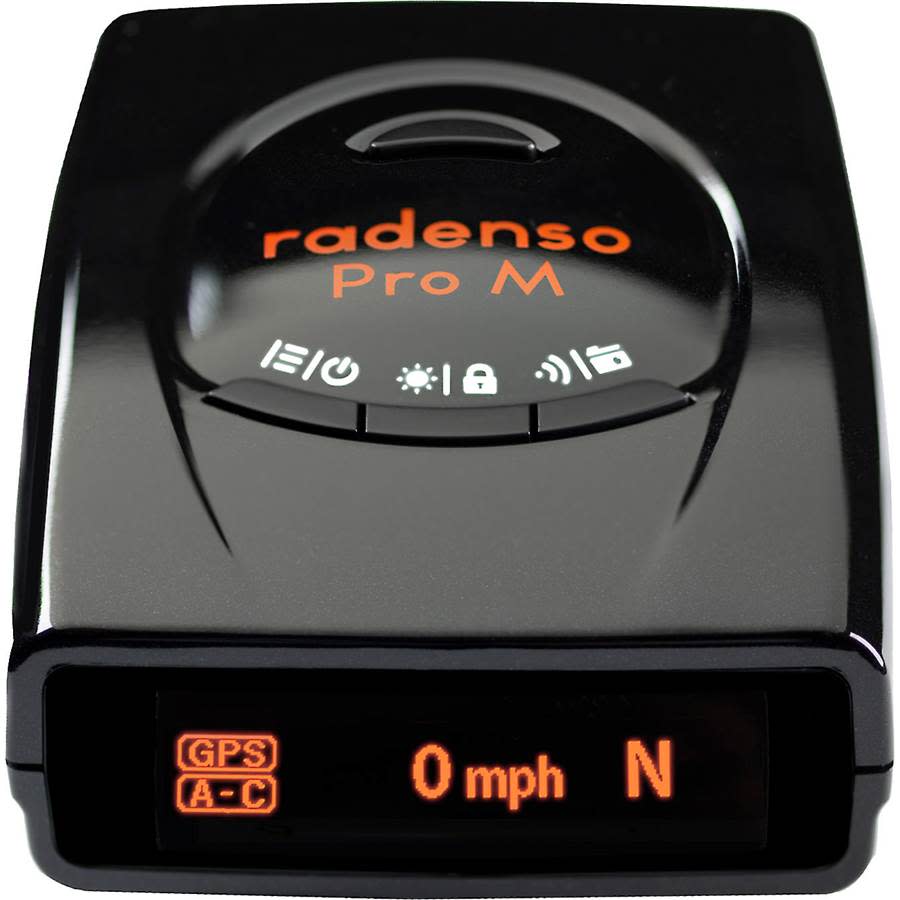
Radenso Pro M
amazon.com
$349.99
RadensoValentine V1 Gen2
Highs: Longest range in test, easy to update, simple display.
Lows: No GPS lockout, picks up more false alarms than the others.
Verdict: There's no better companion for speeding in unfamiliar territory.
The fanatical customers who swear by the original V1 often prefer a noisy detector to a selective one. So when we say that the V1 Gen2 squawks more than the Max 360c and the Pro M, we recognize that some people will see that as a perk. Valentine often leaves it to the driver to use the directional-arrow display to home in on radar sources to determine what's a threat and what isn't.
Setup is easy with the phone app, which can also function as a covert display if you don't want lights on your windshield. While the V1 Gen2 offers only a trivial advantage in frontal range, it picked up radar coming from the rear at two miles, more than half a mile farther than the next-best model, the Max 360c. And the V1 Gen2 gave a mile's notice in our simulated police trap of a blind 90-degree corner, while both the Escort and the Radenso gave half-mile warnings. The V1 Gen2 is the radar detector for those who would rather have too much information than trust the filtering algorithms to get it right.
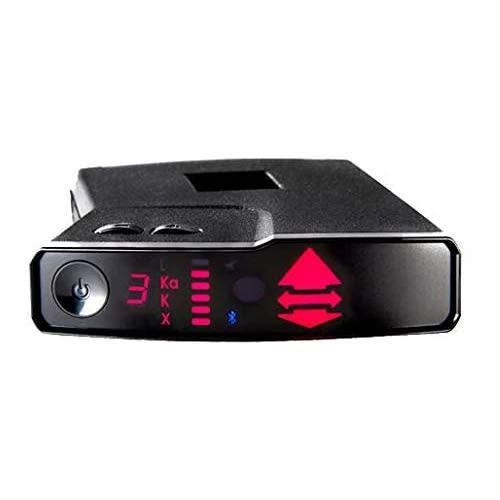
Valentine V1 Gen2
amazon.com
$689.98
Valentine One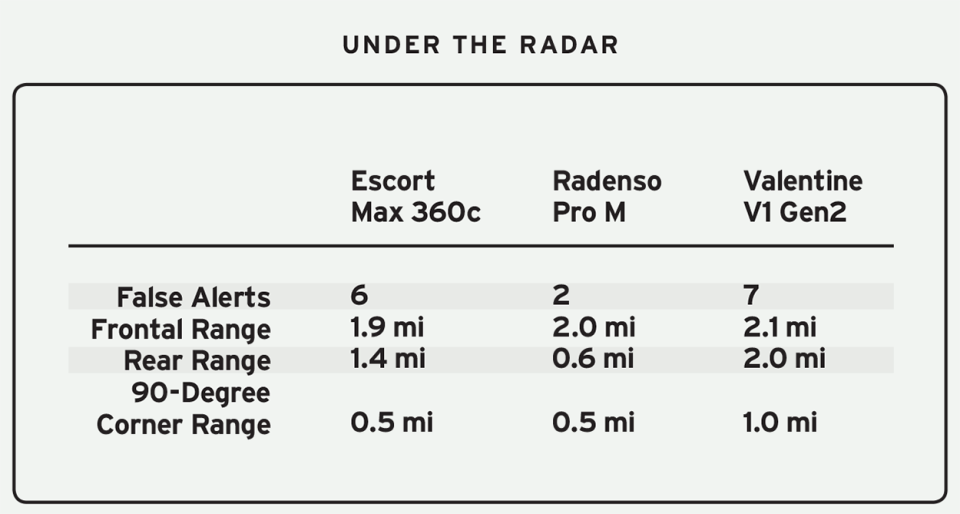
Things To Consider When Buying a Radar Detector
Legality
For the most part, radar detectors are legal for use in personal vehicles in all U.S. states—but there are exceptions. Radar detectors are prohibited for use in the Commonwealth of Virginia and the District of Columbia. In Puerto Rico, radar detectors are legal in all passenger vehicles but illegal in commercial vehicles. North of the border, radar detectors are legal in British Columbia, Alberta, and Saskatchewan but illegal in all other provinces.
Under federal law, the use of radar or laser speed detectors is illegal nationwide in all commercial vehicles over 10,000 pounds. This includes most 18-wheelers. In commercial vehicles under 10,000 pounds, radar detectors are allowed—except in Illinois, Minnesota, New Jersey, New York, Virginia, and Washington, D.C. Radar detectors are always illegal to use on any United States military base.
California and Minnesota have laws against devices attached to a windshield that obstruct the driver's view. No matter where you live, we'd advise against attaching any device to your windshield that a motor officer might construe as obstructing your view. It's a judgment call, and we'd prefer not to give the cops any reason to judge us or our vehicle.
Expectations
Radar detectors can be incredibly valuable, but they aren't flawless. False alarms are a big issue, as many manufacturers advertise their detectors as 'ultra-quiet'—meaning they filter out false alarms from motion-detecting doors and blind-spot monitors. If your radar detector is not good at filtering these out, you're in for an obnoxious drive that will give your heart a workout.
Additionally, radar detectors will sometimes miss staked-out cops due to a variety of factors. Lidar is becoming more and more prevalent, and conventional detectors can't pick that up. These devices aren't ticket-proof—think of them more as a wingman in case you lose track of your speed. Even if they work most of the time, it's better than not having one at all.
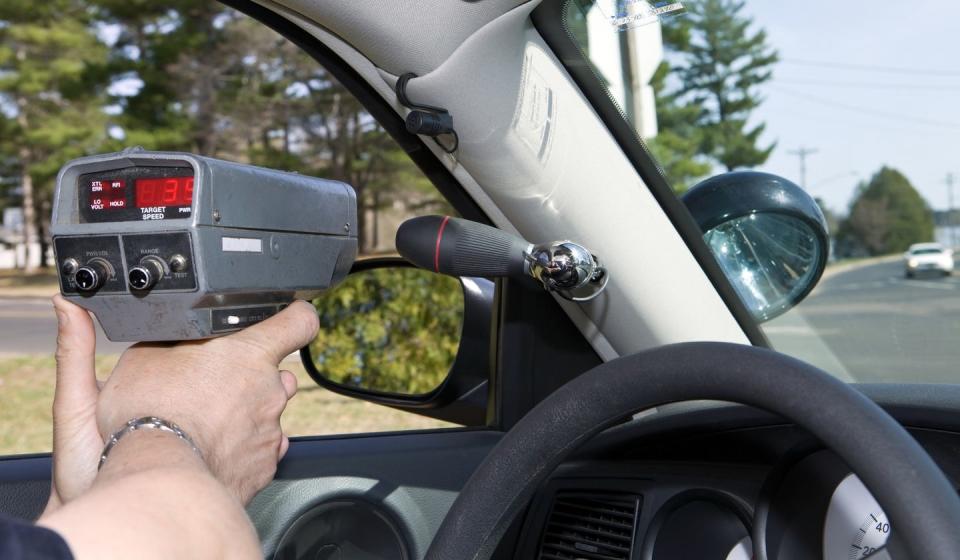
FAQs
Do radar detectors work?
Indeed they do. Whether yours is powerful or high-tech enough to detect police radar reliably every time is only part of the problem. There's no nationwide standard for police radar; an officer in rural Nebraska may still use 30-year-old X-band guns (don't ask us how we know), while urban police will use Ka-band radar or even laser guns. You better hope you don't come across a Smokey using a laser device. Technically they are lidar guns, providing a virtually instant readout of your speed. Lidar is more difficult to evade than traditional radar. It is undetectable unless it's on and already measuring your speed, and by then it's usually too late. Crowd-sourced apps such as Waze are much better at alerting you to a cop using a lidar gun than a windshield- or dash-mounted radar detector.
Conventional radio radar is relatively easy to detect, and a basic radar detector should have no problem picking up these signals. Hopefully, your detector sounds the alarm in time for you to scrub enough speed before the radar gun can accurately measure how fast you were going. More sophisticated modern detectors take a more active role. Not only do they detect police radar and alert you to its presence, but they use an internal transmitter to emit a similar radio signal, mixing it with radio noise to prevent an accurate speed reading on the officer's radar gun. Additionally, modern radar detectors often include a light-sensitive panel that detects laser beams from lidar guns, and some filter noise from motion detectors at businesses, blind-spot monitors on other vehicles, and even other radar detectors. More on that below.
It's important to note that no radar detector is 100 percent effective; there's no guarantee that even with a radar detector on your dash, you won't get a speeding ticket. Radar technology is constantly improving and being upgraded—and so are radar detectors. Think of your cellphone from just a few years ago versus the smartphone in your pocket today; much like your old phone, your old radar detector may already be obsolete. Consider upgrading to one of the newer models spotlighted above.
Are radar detectors worth it?
Well, that's subjective. Radar detectors can cost anywhere from a couple hundred bucks to $700 or more, so it's no small investment. A lot of drivers swear by them, insisting their radar detector has paid for itself many times over. Others say they're a waste of money and that fastidious scanning of traffic for brake lights and a roof-mounted gumball is better practice.
We're not here to tell anyone how they ought to drive, but if you drive fast, speeding tickets are a very real risk. If you tend to speed regularly or just have bad luck with speeding tickets, a radar detector could be a solid investment.
Things that set off radar detectors
In addition to how they work and the type of signals they detect, a major difference between older radar detectors and newer, higher-end devices is the number of false alerts given. False alerts can be caused by anything that, like police radar, uses X-, K-, or Ka-band frequencies. This includes traffic monitors and roadside electronic warning signs to emergency vehicles. Modern radar detectors use advanced processing to filter out false signals.
The advanced safety systems so common in many modern cars are among the biggest sources of false alerts these days. These include things like adaptive cruise control, lane-departure warnings, and blind-spot-monitoring systems. Such systems typically use K-band radio frequencies to determine how far away an object is from a vehicle, so just being near another car could set off your radar detector.
Automatic door openers are another source of false alarms—not just garage-door openers but also the auto door openers used by retail storefronts. If you're using an aged radar detector, simply driving past your neighborhood grocery store could set the thing off. If you're getting more false alerts than ever, that's a sign your radar detector may have outlived its usefulness. Consider upgrading to one of the devices above.
Why Trust Us
Car and Driver combines the talent, resources, and expertise of the best automotive journalists in the world. We get our hands on each and every product we test. Most are purchased; some are supplied by manufacturers.
Car and Driver doesn't need to game algorithms for traffic or promote lousy products to earn a buck. Instead, we're more concerned with our legacy, our reputation, and the trust that our readers have to deliver honest opinions and expert evaluations.

You Might Also Like

 Yahoo Autos
Yahoo Autos 